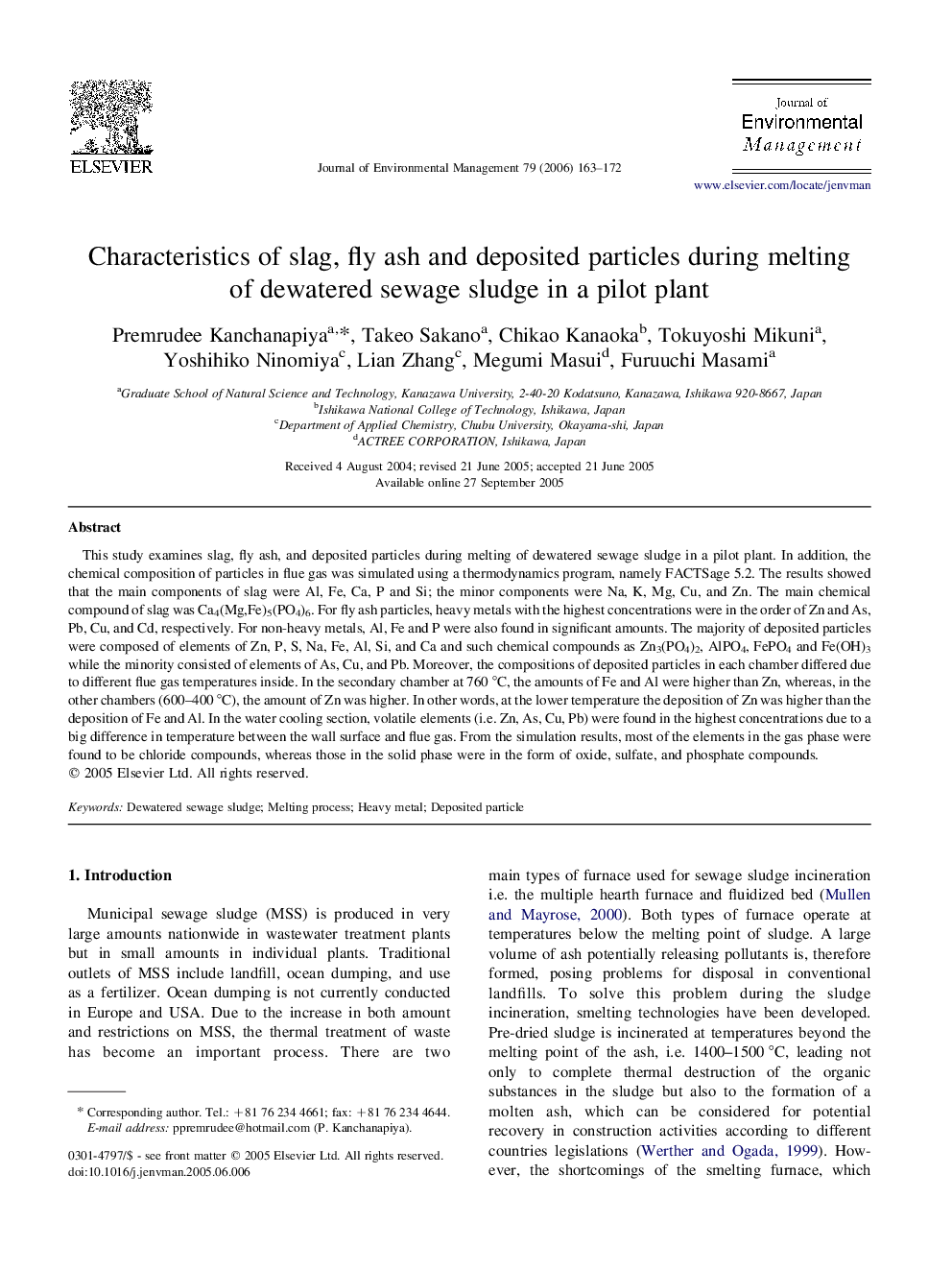| Article ID | Journal | Published Year | Pages | File Type |
|---|---|---|---|---|
| 1058227 | Journal of Environmental Management | 2006 | 10 Pages |
This study examines slag, fly ash, and deposited particles during melting of dewatered sewage sludge in a pilot plant. In addition, the chemical composition of particles in flue gas was simulated using a thermodynamics program, namely FACTSage 5.2. The results showed that the main components of slag were Al, Fe, Ca, P and Si; the minor components were Na, K, Mg, Cu, and Zn. The main chemical compound of slag was Ca4(Mg,Fe)5(PO4)6. For fly ash particles, heavy metals with the highest concentrations were in the order of Zn and As, Pb, Cu, and Cd, respectively. For non-heavy metals, Al, Fe and P were also found in significant amounts. The majority of deposited particles were composed of elements of Zn, P, S, Na, Fe, Al, Si, and Ca and such chemical compounds as Zn3(PO4)2, AlPO4, FePO4 and Fe(OH)3 while the minority consisted of elements of As, Cu, and Pb. Moreover, the compositions of deposited particles in each chamber differed due to different flue gas temperatures inside. In the secondary chamber at 760 °C, the amounts of Fe and Al were higher than Zn, whereas, in the other chambers (600–400 °C), the amount of Zn was higher. In other words, at the lower temperature the deposition of Zn was higher than the deposition of Fe and Al. In the water cooling section, volatile elements (i.e. Zn, As, Cu, Pb) were found in the highest concentrations due to a big difference in temperature between the wall surface and flue gas. From the simulation results, most of the elements in the gas phase were found to be chloride compounds, whereas those in the solid phase were in the form of oxide, sulfate, and phosphate compounds.
